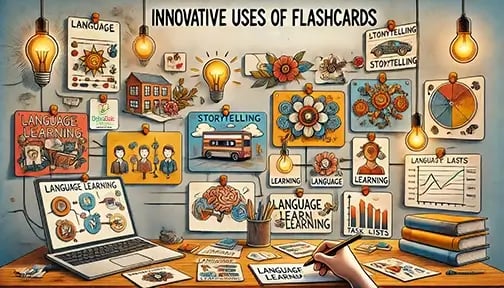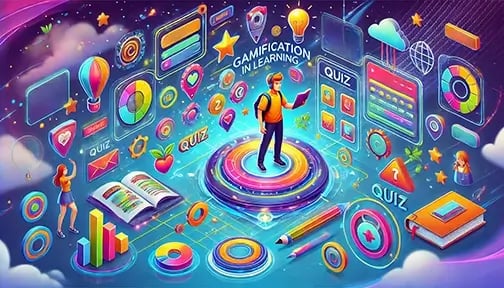Flashcards have long been a staple of education, widely used for memorization and drilling. However, their potential extends far beyond simple question-and-answer formats. Whether you're a student, teacher, or professional, index cards can be transformed into versatile learning and organizational tools that enhance creativity, productivity, and engagement.
In this blog post, we’ll explore innovative ways to use flashcards that go beyond rote memorization. From study hacks to organizational tips and hands-on learning strategies, you’ll discover how index cards can be a game-changer in your workflow and study sessions. Plus, we’ll share links to Debra Dale Designs Flash Cards and Index Cards to help you find the perfect set for your needs.
Why Flash cards Are Still Essential in the Digital Age
With the rise of digital learning apps, many assume that traditional flash cards have lost their relevance. However, physical flash cards and index cards remain invaluable for several reasons:
Tactile Learning: Writing and handling cards reinforce memory through kinesthetic learning.
Customization: Unlike digital tools, physical flashcards can be tailored with drawings, colors, and different layouts.
No Digital Distractions: A physical study tool eliminates notifications and screen fatigue.
Flexible Learning: They can be used anywhere, from study groups to solo review sessions.
Now, let’s explore some unique ways to use flash cards beyond traditional drilling.
1. Mind Mapping and Idea Organization
Flash cards are excellent for brainstorming and organizing thoughts. Whether you're outlining an essay, planning a project, or developing a storyline for a novel, index cards help visualize complex ideas.
How to use them:
Write key concepts on separate cards and arrange them in clusters.
Use arrows and symbols to connect related ideas.
Shuffle and rearrange them as your ideas evolve.
2. Storytelling and Creative Writing Prompts
For writers, flash cards can serve as an excellent tool for developing stories and overcoming writer’s block.
Creative uses:
Write different characters, settings, and conflicts on separate cards. Pick one from each stack to create an instant story prompt.
Develop plot points on individual cards and arrange them to structure your narrative.
Use flashcards to jot down bits of dialogue, themes, or potential twists.
3. Language Learning Beyond Vocabulary Drills
Flashcards are widely used for language learning, but they can be taken to the next level.
Creative methods:
Write full sentences instead of just words to practice context.
Create "scenario cards" where learners must use the word in a real-life situation.
Design flash cards with visual cues and drawings to reinforce meaning without relying on translation.
4. Active Recall and Self-Quizzing with a Twist
Instead of simply flipping a card for the answer, gamify your flash cards to make studying more interactive.
Ideas to try:
Speed Rounds: Set a timer and see how many cards you can correctly answer in one minute.
Trivia Battles: Compete with a friend by answering flashcard questions in a game format.
Reward System: Attach rewards (e.g., a break, snack, or fun activity) to specific milestones.
5. Productivity and Task Management
Flashcards can serve as a powerful organizational tool for managing tasks, goals, and projects.
How to use them:
Write tasks on individual index cards and categorize them by priority.
Use color-coded cards for different project phases.
Arrange cards on a board to track progress visually, like a Kanban system.
6. Art and Doodling Inspiration
For artists and visual learners, flashcards provide an excellent medium for inspiration and practice.
Creative applications:
Draw different art prompts on flashcards and shuffle them to inspire daily sketches.
Use flashcards for quick gesture drawing exercises.
Write down different artistic challenges (e.g., "draw using only one color") and randomly pick one when feeling uninspired.
7. Interactive Classroom and Group Activities
Teachers can leverage flashcards to make learning more engaging and participatory.
Examples:
Matching Games: Create pairs of cards with related concepts (e.g., historical events and dates).
Role-Playing: Assign different flashcards with roles or discussion prompts to students.
Exit Tickets: Have students write one thing they learned on an index card before leaving class.
8. DIY Board Games and Learning Tools
Flashcards can be turned into fun learning games for kids and adults alike.
Ideas:
Create a trivia game using flashcards with questions and answers.
Develop a "choose your own adventure" style game with scenario-based cards.
Use flash cards for homemade charades or Pictionary.
9. Public Speaking and Presentation Practice
If you need to deliver a speech or presentation, flash cards can help you practice effectively.
How to use them:
Write key points or bullet points on individual cards instead of full sentences.
Arrange them logically to guide your speech without reading word-for-word.
Use them for impromptu speaking drills by picking a random card and speaking on the topic.
10. Personal Growth and Journaling Prompts
Flashcards can be a valuable tool for self-reflection and personal development.
Ways to use them:
Write down daily affirmations or motivational quotes to read each morning.
Create gratitude cards with things you appreciate in your life.
Use them as journaling prompts to explore thoughts and emotions.
11. Scientific Method and Problem-Solving Exercises
For STEM students, flashcards can help structure experiments and problem-solving strategies.
Applications:
Write out different steps of the scientific method on cards and practice applying them to various experiments.
Use index cards for equation-solving drills or breaking down complex math problems.
Create physics or chemistry reaction cards where students must predict outcomes.
12. Memory Palace and Association Techniques
Flash cards can help reinforce memory techniques beyond simple repetition.
Creative ideas:
Assign locations to different cards and visualize them in a "memory palace."
Create associative links by drawing related images or using mnemonics.
Develop stories around the facts on your flash cards to make them more memorable.
Conclusion: Upgrade Your Flashcard Game Today
Flash cards and index cards are more than just study aids—they're powerful tools for creativity, organization, and hands-on learning. Whether you’re preparing for exams, boosting productivity, or exploring new artistic techniques, index cards can transform the way you engage with information.
If you're looking for high-quality flash cards and index cards, check out Debra Dale Designs' Flash Cards and Index Cards to find the perfect set for your needs.
Get creative, experiment with new ways to use flash cards, and discover how these simple tools can supercharge your learning and productivity!




